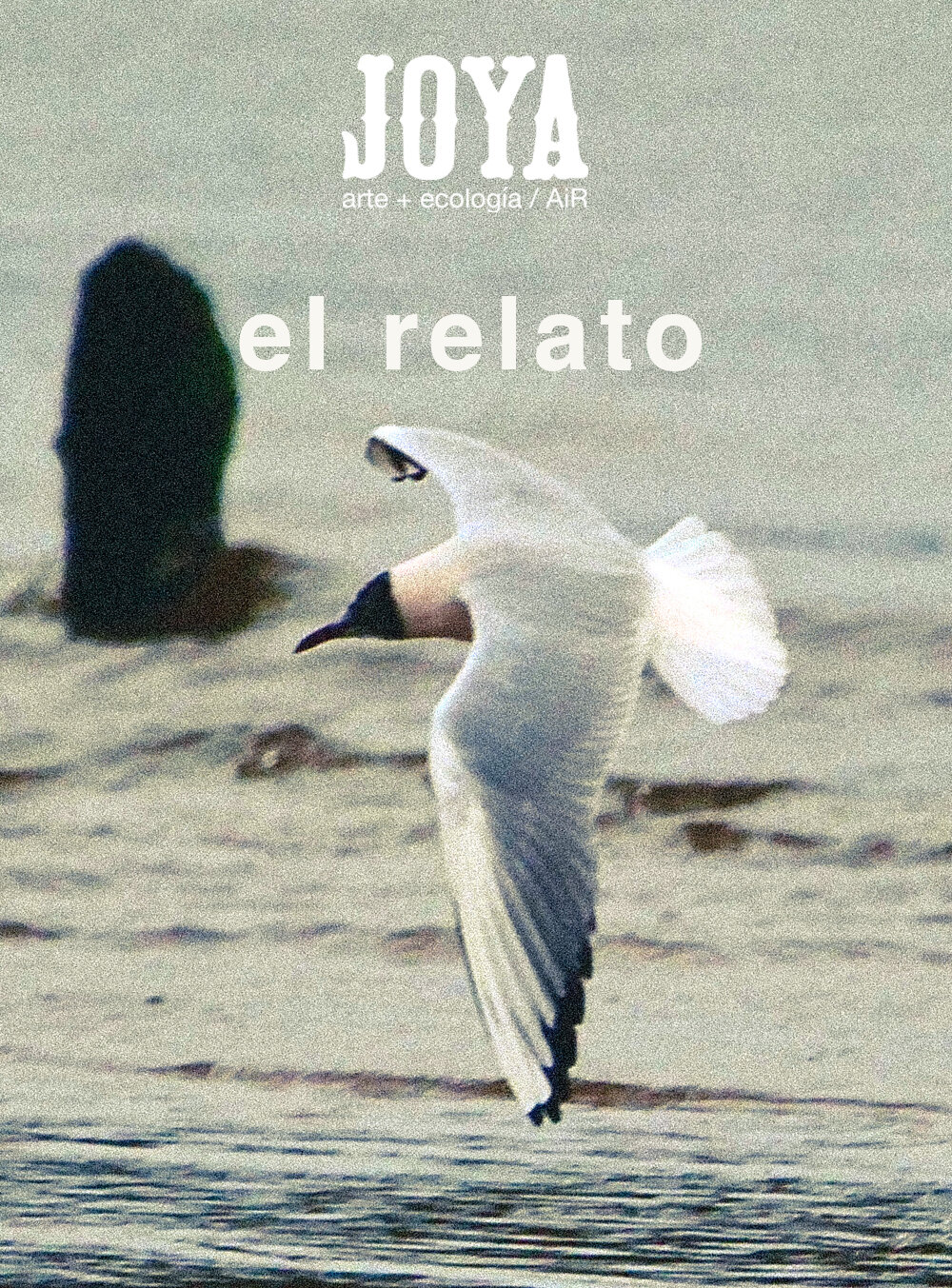El Relato #9 / Anne Charnock / A Migration Between Art and Fiction
Black Headed Gull with breeding plumage. Ettrick Bay on the Isle of Bute 2021 Anne Charnock edited for El Relato by Simon Beckmann
I first became aware of anthropogenic climate change in the 1970s when I studied environmental science at the University of East Anglia. UEA was the home of the newly-formed Climatic Research Unit. I remember a buzz of excitement when Arctic ice cores arrived at the unit for analysis as part of a daring scientific endeavour. The aim being to build a historical record of our global climate — not only from ice cores, but also from tree rings and disparate historical weather records from around the world. Ever since my student days I have remained alert to any events related to climate and, one way or another, I have attempted to keep climate change as a central interest in my working life—as a science journalist and photojournalist, later as an artist, and more recently as a fiction writer.
In 2005, I helped to launch my local community’s drive to become England’s first carbon-neutral village. This has been a fifteen-year project involving all age-groups and has led to a drop in individual household carbon emissions of between 25% and 40%. And, to our surprise, the project has led to stronger community cohesion; a wonderful spin-off. The Ashton Hayes Going Carbon Neutral Project also established a community energy company that now provides free solar-generated electricity for the local primary school.
Studio shot: Tipping Point #2 (2012) detail. Acrylic ink on paper. 140cm x 100cm.
When I arrived at Cortijada Los Gázquez for my Joya: AiR residency in 2012, my art practice had started to make a close connection with climate change in the form of my ‘Tipping Point’ paintings. My painting process was simple and methodical. I fixed a large sheet of paper to a board and dripped acrylic ink onto the surface. I lifted one edge of the board until a single drop of ink began to run. I propped the board in that position and waited for the ink to dry overnight. Over subsequent days I repeated the process several times, lifting a different side of the board in turn. The viewer can unpick my process. I like to think that the painting can be read.
However, despite being excited about this new work and about my art practice in general, I remember feeling torn. I had finished writing my first novel, A Calculated Life—set against a backdrop of climate breakdown—and I felt I should commit to either writing fiction or making art. In the end, I decided to put my art practice on the back burner at least while I focussed on getting published, and I wrote my second novel, Sleeping Embers of an Ordinary Mind.
Bridge 108 (2020) Anne Charnock’s latest novel. This dystopian story is told through multiple voices. A young climate refugee treks north from Spain to escape wildfires and drought, but soon falls prey to traffickers.
With four novels now published, I no longer see fiction as a digression from my art practice. In fact, I regard fiction in the same way that I regard any medium. I see it alongside paint, installation, text-art, photography. These are all creative paths allowing me to explore the subjects that mean the most to me.
Redshank at Port Bannatyne Bay on the Isle of Bute. 2021. photo Anne Charnock
Today, I live on the Isle of Bute in Scotland and, during lockdown, I have taken up bird photography as a way of forging a closer connection with nature, allowing me to appreciate bird migrations through the changing seasons. As our climate changes, I wonder if I will notice shifts in the migratory patterns, if I will see fewer or different bird species visiting the island from one year to the next, from one decade to the next.
And during lockdown I have created a fictional character in a new novel-in-progress. This character is an artist who mimics my own reconnection with nature through birdwatching. Nature-photography-fiction: a continual cross-current of inspiration.
Anne Charnock
Bio
Anne Charnock is an artist and the author of four novels. Her writing career began in journalism and her articles appeared in New Scientist and The Guardian. She studied environmental sciences at the University of East Anglia and gained her MA in fine art at The Manchester School of Art. She is a founder member of Suite Studio Group in Salford. Her art practice has explored the essential characteristic of uncertainty in human intelligence, and her work also reflects her interest in dystopian and ecological literature.
Her novel centred on human reproductive technologies, Dreams Before the Start of Time, won the Arthur C. Clarke Award 2018, and her novella, The Enclave, won the British Science Fiction Association’s Best Short Fiction Award 2017. Her novel, Sleeping Embers of an Ordinary Mind (2015), is a feminist novel set in the past, present and future. It imagines an art historian in a future Academy of Restitution, which is dedicated to elevating women artists who have been overlooked by history. Anne has also written two companion novels, A Calculated Life (shortlisted for the Philip K. Dick Award 2013) and Bridge 108 (2020), which are set in a world embroiled in climate breakdown.
http://annecharnock.com/ https://www.axisweb.org/p/annecharnock/




